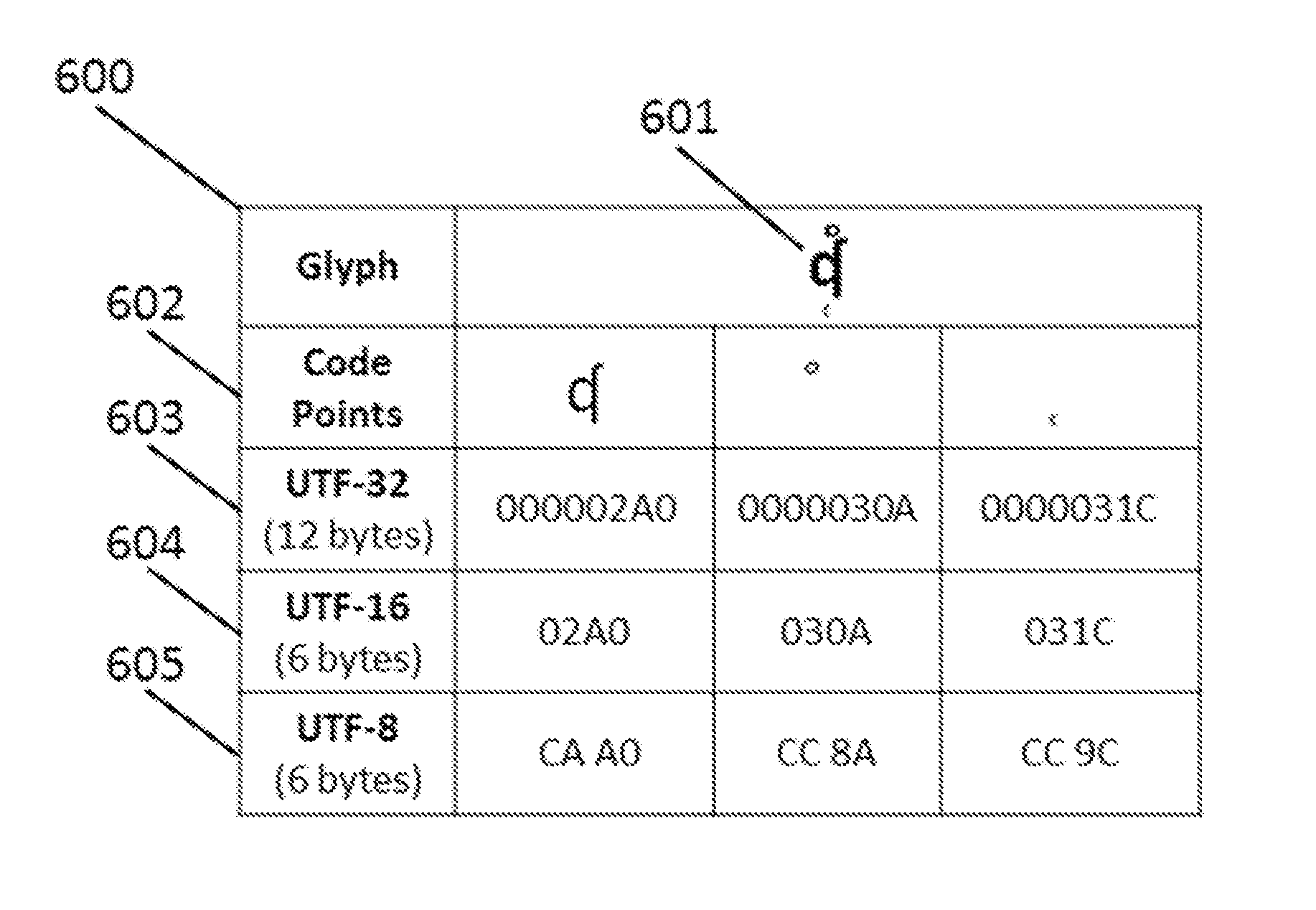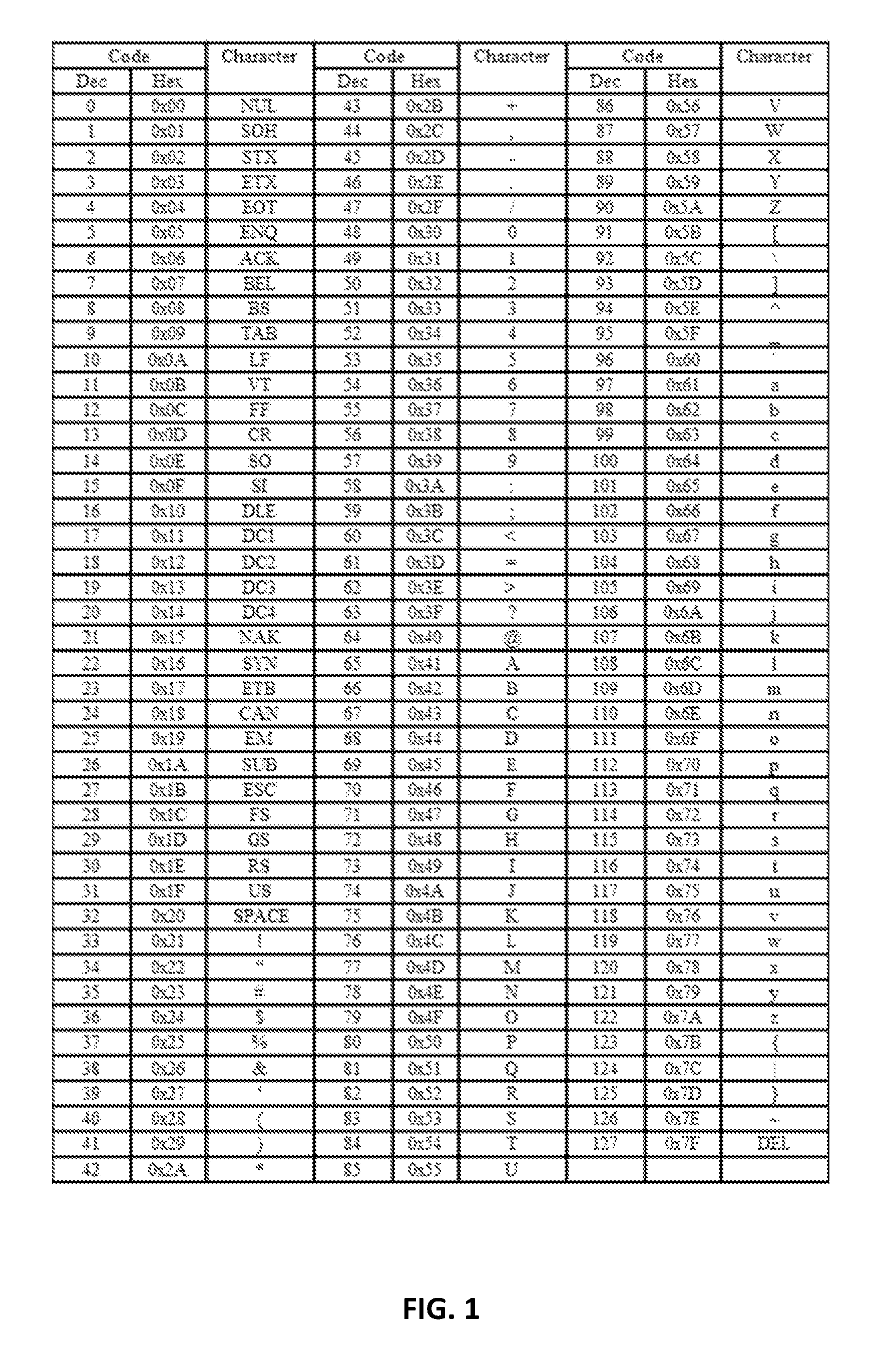Apparatus and method for cryptographic operations using enhanced knowledge factor credentials
a technology of knowledge factor and cryptographic operations, applied in the field of computer security functions, can solve the problems of many systems being vulnerable to attack by hackers and criminals, users having difficulty meeting both requirements, and achieving epic proportions, so as to prevent guessing, shorten the memory, and the effect of preventing guessing
- Summary
- Abstract
- Description
- Claims
- Application Information
AI Technical Summary
Benefits of technology
Problems solved by technology
Method used
Image
Examples
embodiment 1
2. The method of embodiment 1, wherein: the multi-byte character set specifying a plurality of characters is a Unicode character set specifying more than 32,000 characters; receiving a knowledge factor credential comprises: displaying a user interface by which a user is presented more than 32,000 user-selectable characters of the Unicode character set; and receiving at least one character of the knowledge factor credential via the user interface, wherein at least one character of the knowledge factor credential combines a plurality of constituent characters into a single character with code points; providing the knowledge factor credential comprises: transforming the knowledge factor credential into an authentication token; and creating an authentication digest based on the authentication token and at least one other parameter; the method further comprises: comparing the authentication digest to a previously stored authentication digest to authenticate the user.
3. The method of any ...
embodiment 3
4. The method of embodiment 3, wherein presenting a user interface through which more than 256 characters are selectable comprises: presenting a user interface through which more than 1,024 characters are selectable.
5. The method of embodiment 3, wherein presenting a user interface through which more than 256 characters are selectable comprises: presenting a user interface through which more than 4,096 characters are selectable.
6. The method of embodiment 3, wherein presenting a user interface through which more than 256 characters are selectable comprises: presenting a user interface through which more than 32,768 characters are selectable.
7. The method of any of embodiments 1-6, wherein receiving the knowledge factor credential comprises: presenting a user interface by which a single composite character is composed by selecting a plurality of constituent characters; receiving user selections of the constituent characters; and combining the constituent characters into a single char...
embodiment 8
9. The method of embodiment 8, wherein presenting a user interface by which the candidate characters are selectable comprises: interspersing the candidate characters among un-designated characters to obfuscate which characters were previously designated.
10. The method of any of embodiments 1-9, wherein providing the knowledge factor credential to authenticate a user comprises: normalizing the characters of the credential by changing a sequence of bits with which at least one of the characters in the credential is encoded.
11. The method of any of embodiments 1-10, wherein providing the knowledge factor credential to authenticate a user comprises: including a byte order mark to a sequence of bytes encoding the knowledge factor credential; and sequencing the bytes encoding knowledge factor credential consistent with the byte order mark.
12. The method of any of embodiments 1-11, wherein providing the knowledge factor credential to authenticate a user comprises: submitting the knowledge ...
PUM
 Login to View More
Login to View More Abstract
Description
Claims
Application Information
 Login to View More
Login to View More - R&D
- Intellectual Property
- Life Sciences
- Materials
- Tech Scout
- Unparalleled Data Quality
- Higher Quality Content
- 60% Fewer Hallucinations
Browse by: Latest US Patents, China's latest patents, Technical Efficacy Thesaurus, Application Domain, Technology Topic, Popular Technical Reports.
© 2025 PatSnap. All rights reserved.Legal|Privacy policy|Modern Slavery Act Transparency Statement|Sitemap|About US| Contact US: help@patsnap.com



